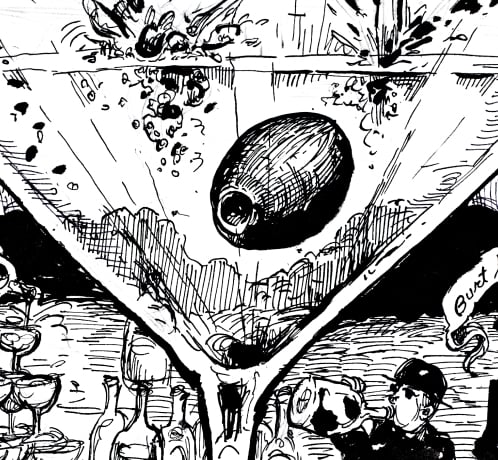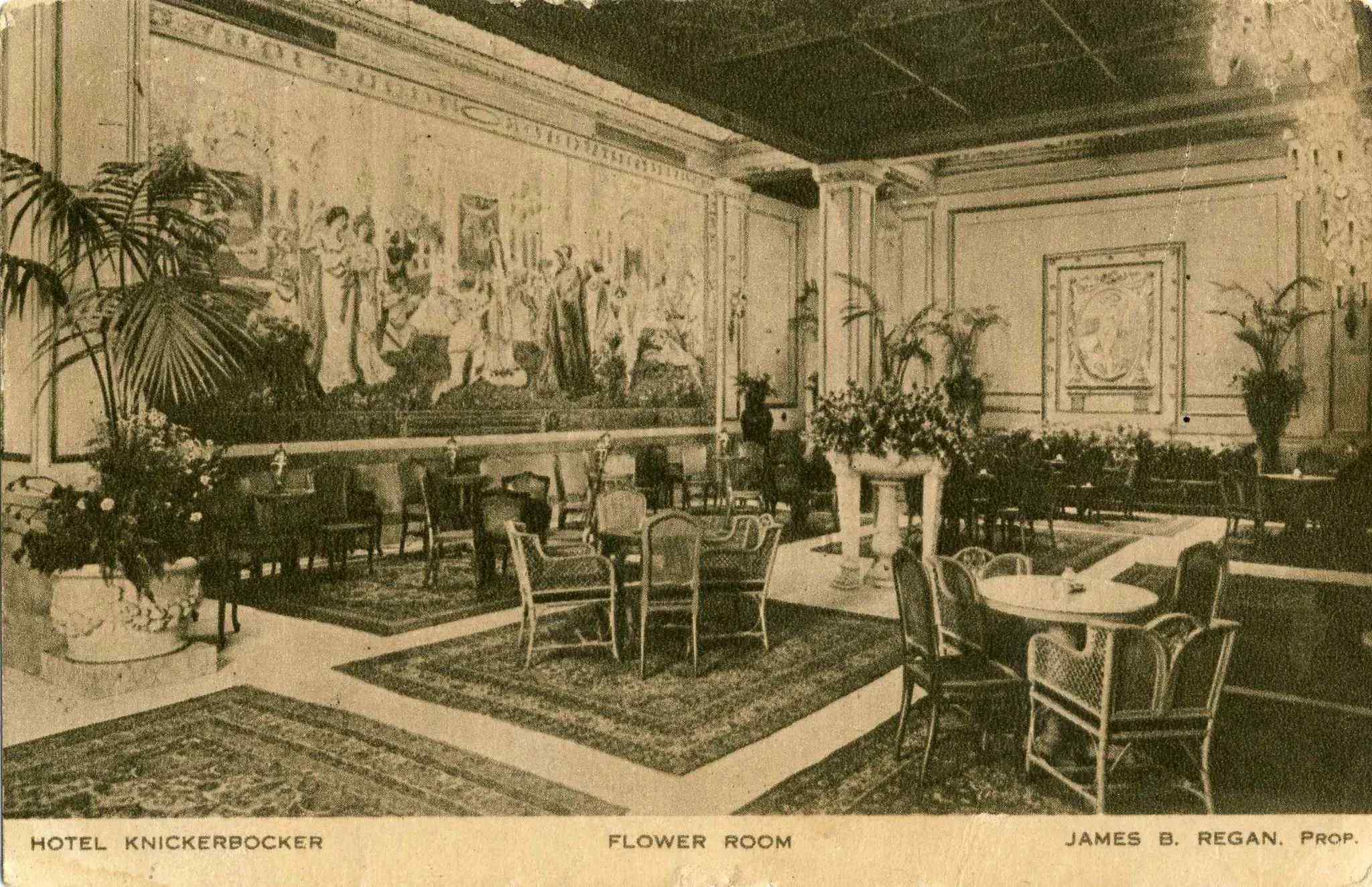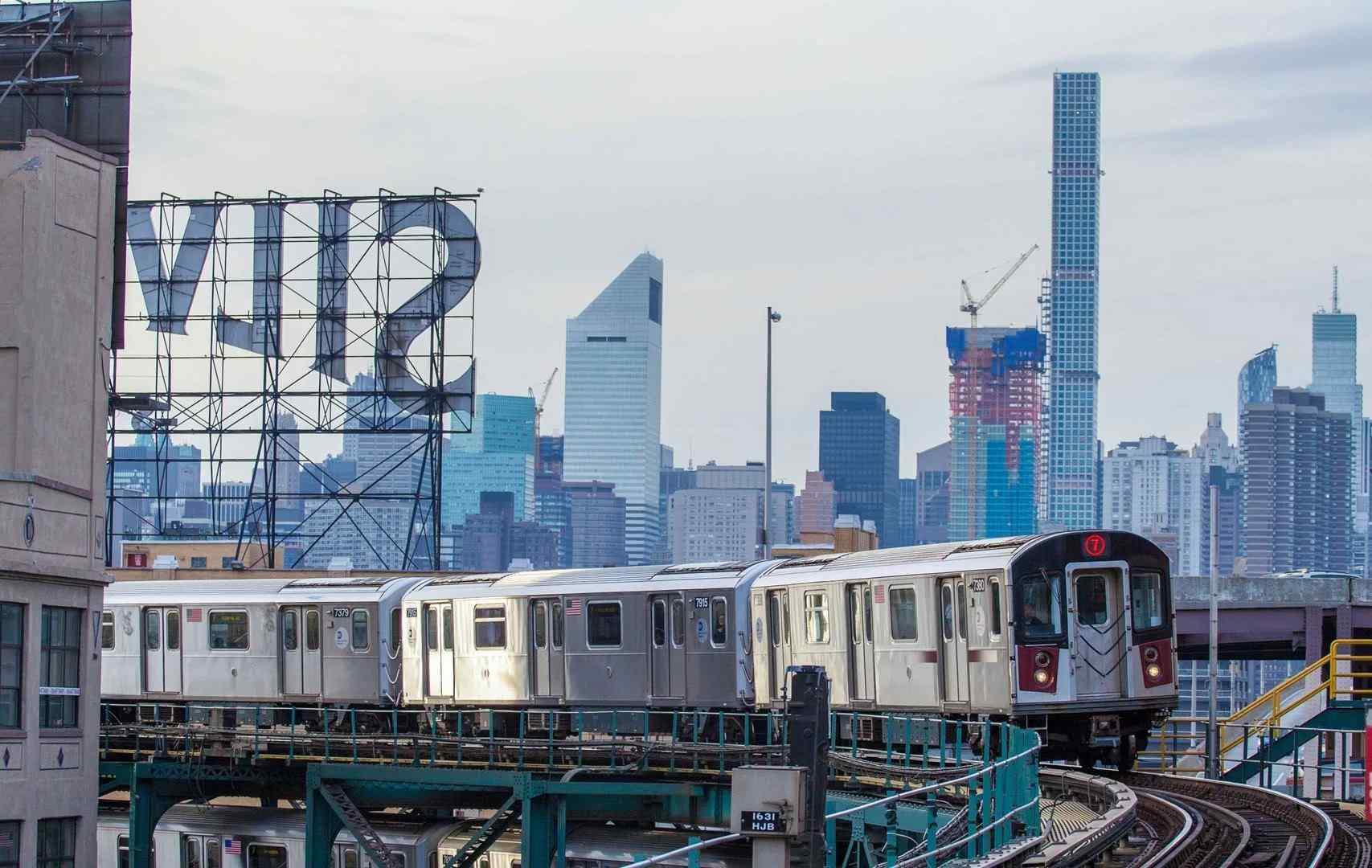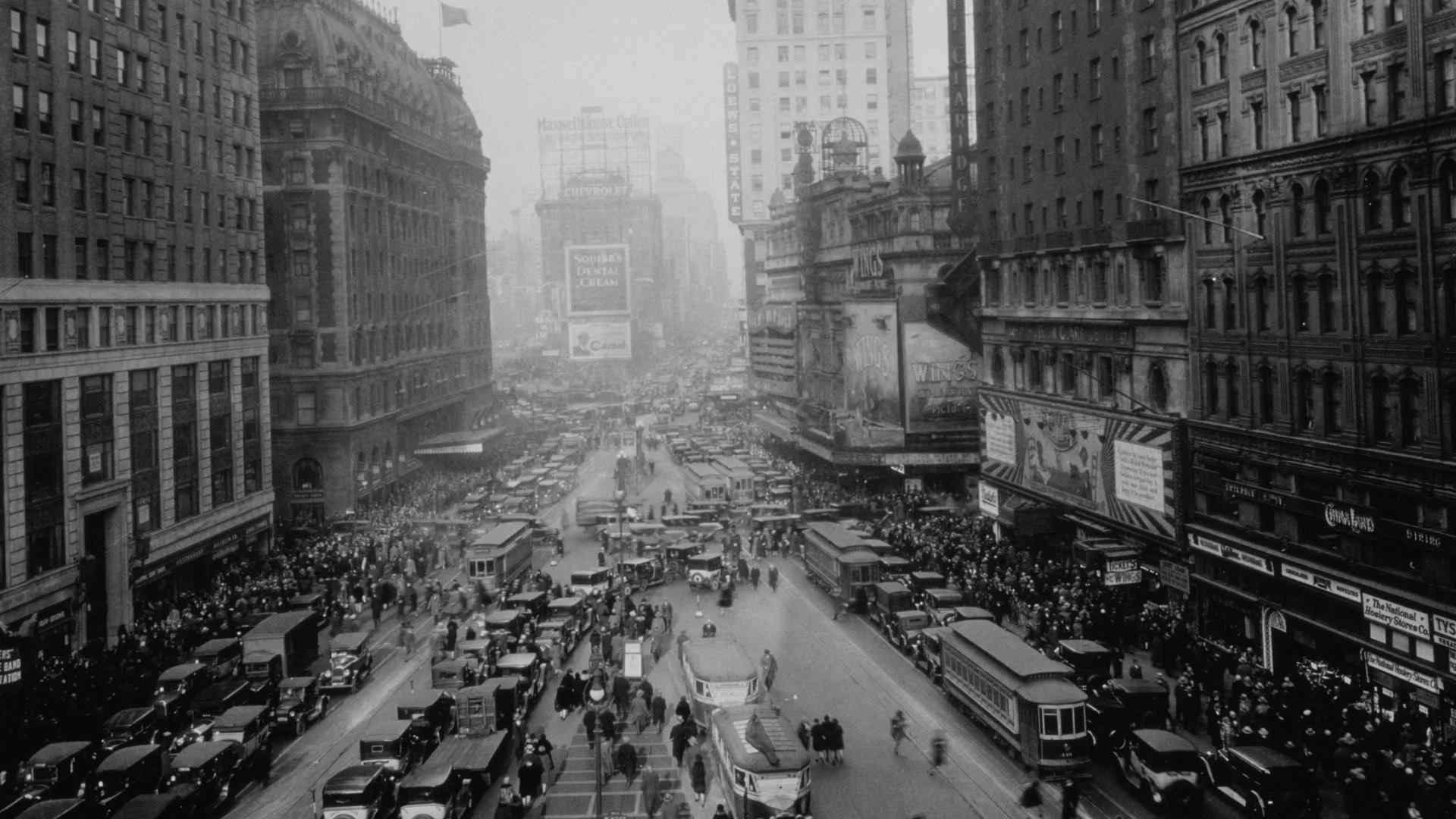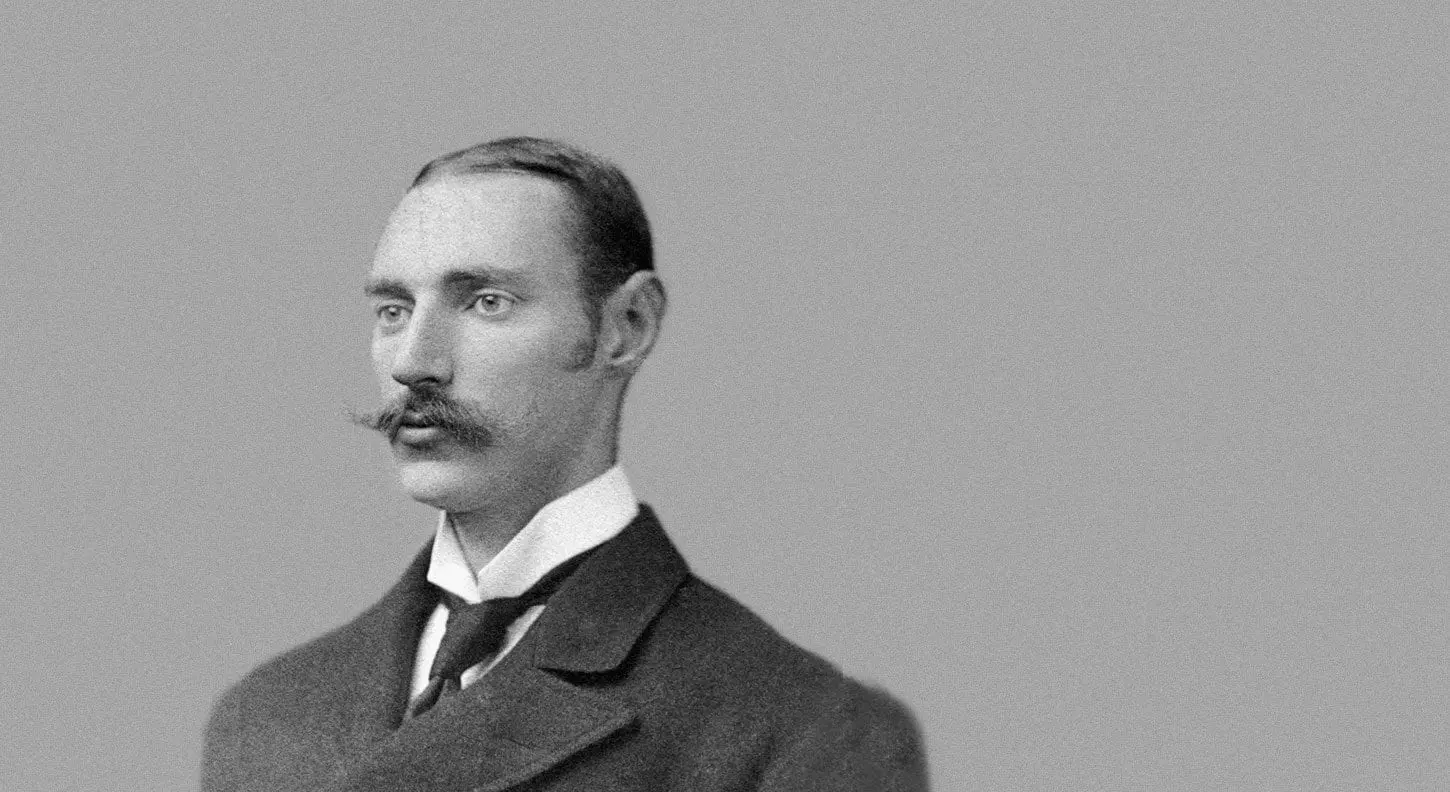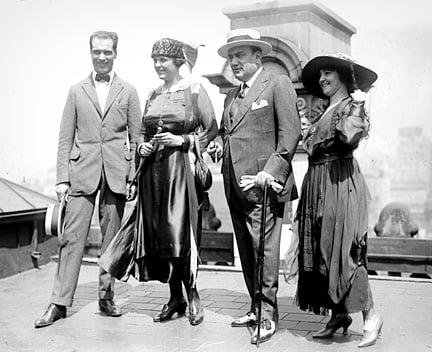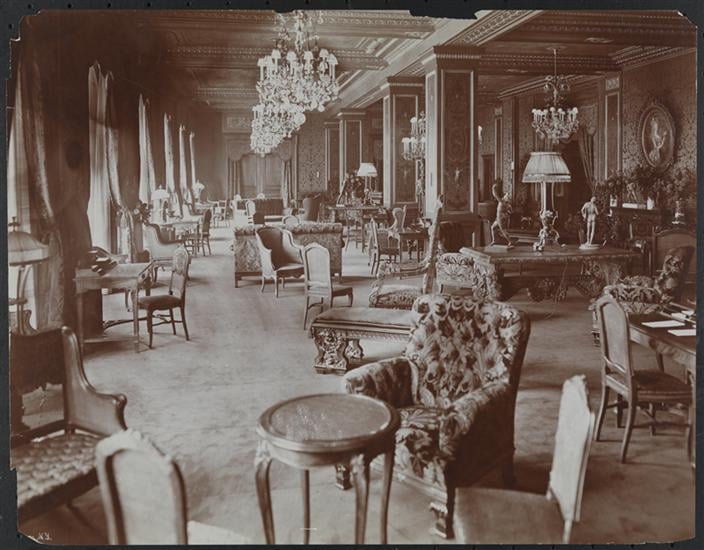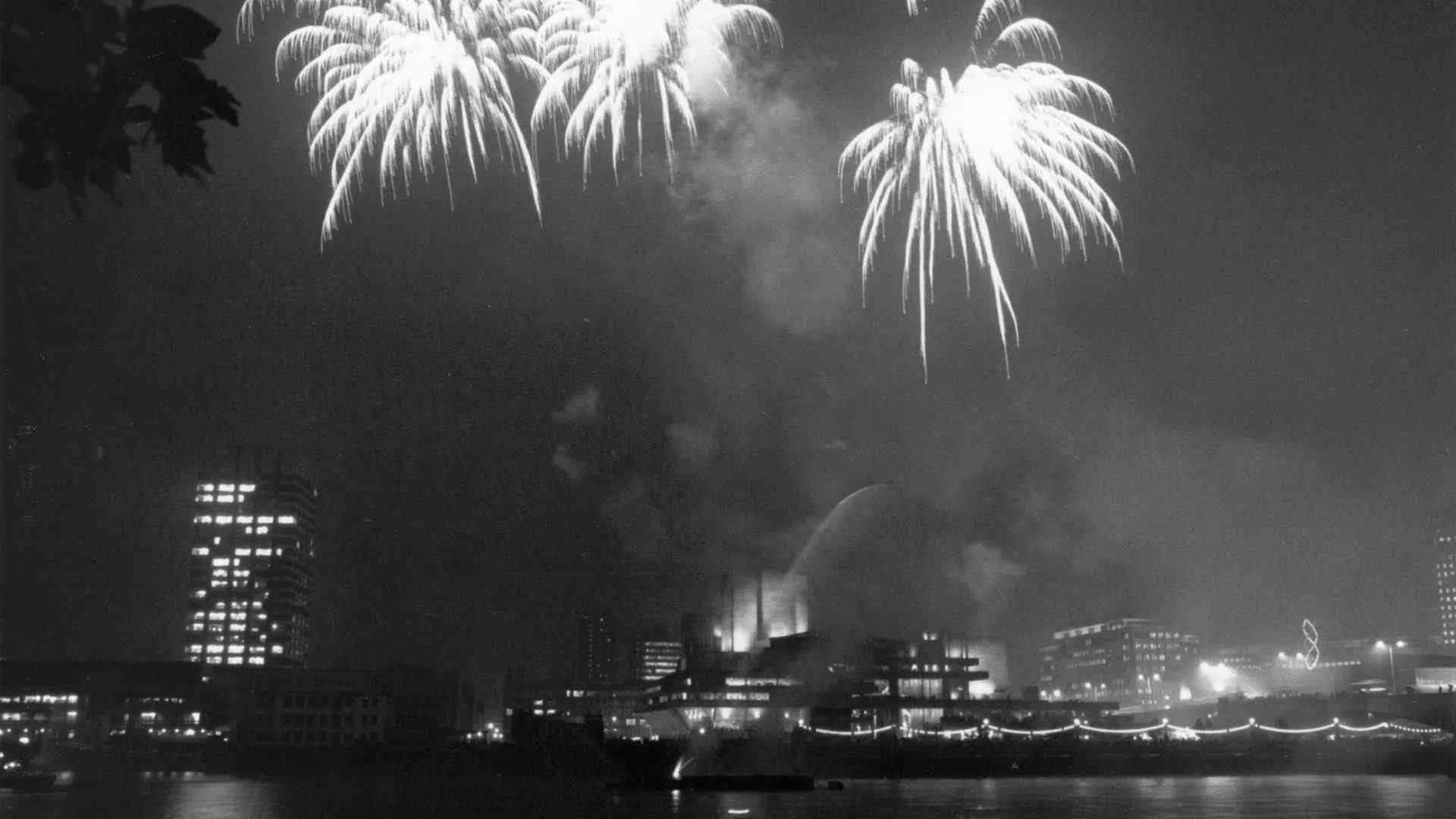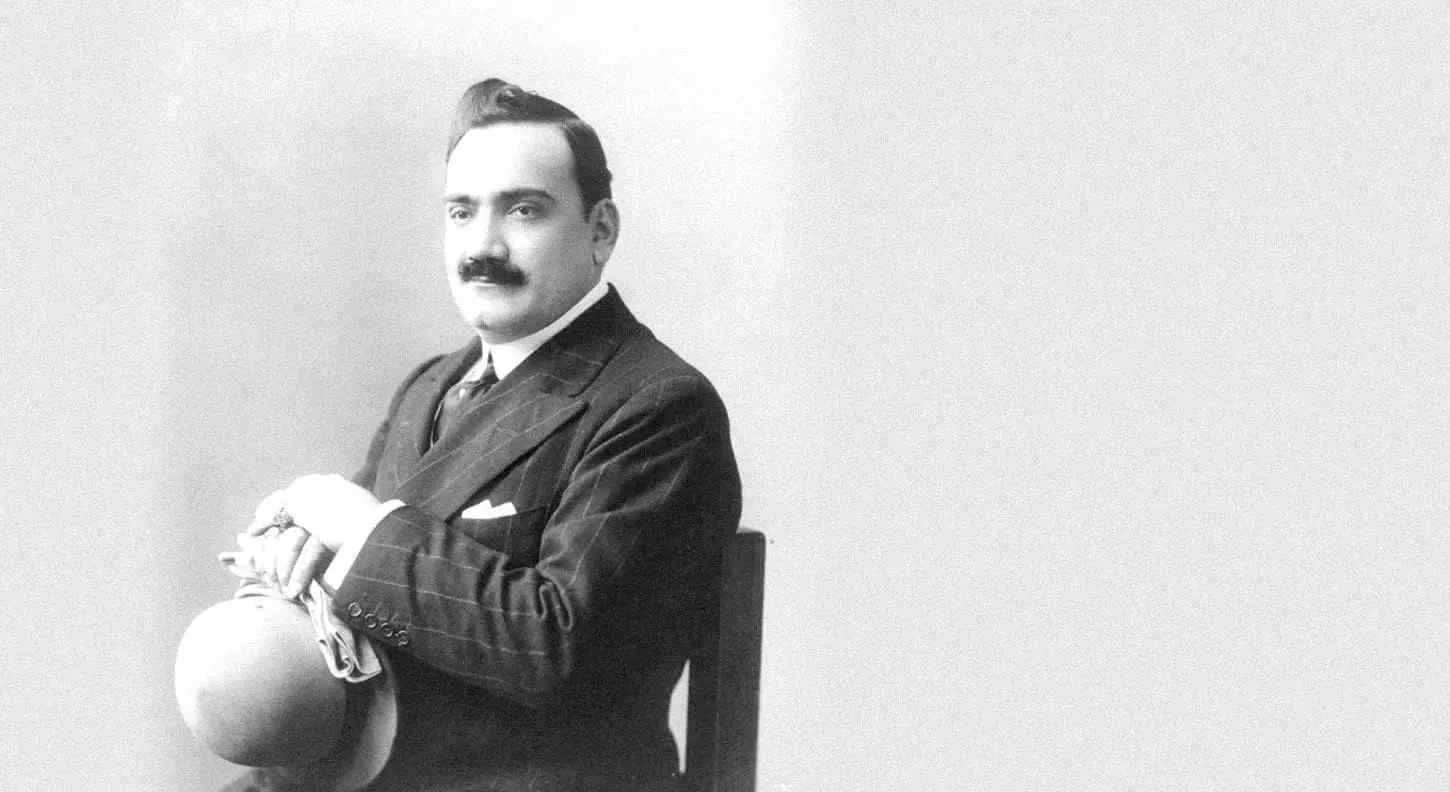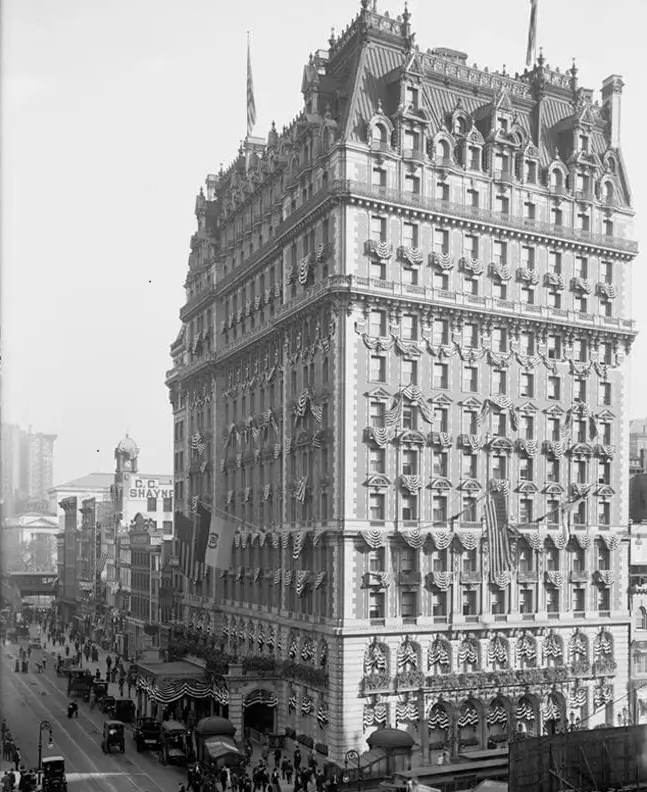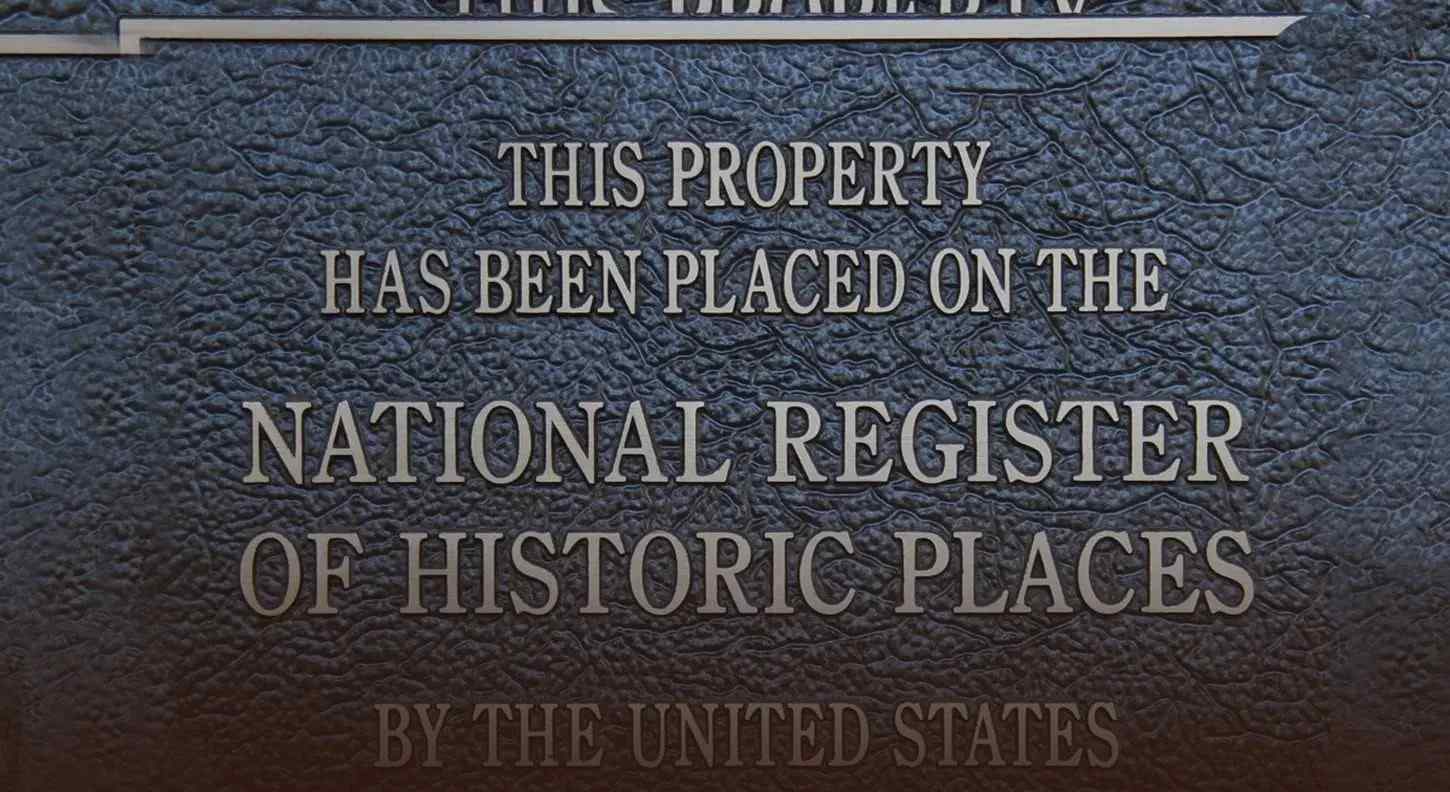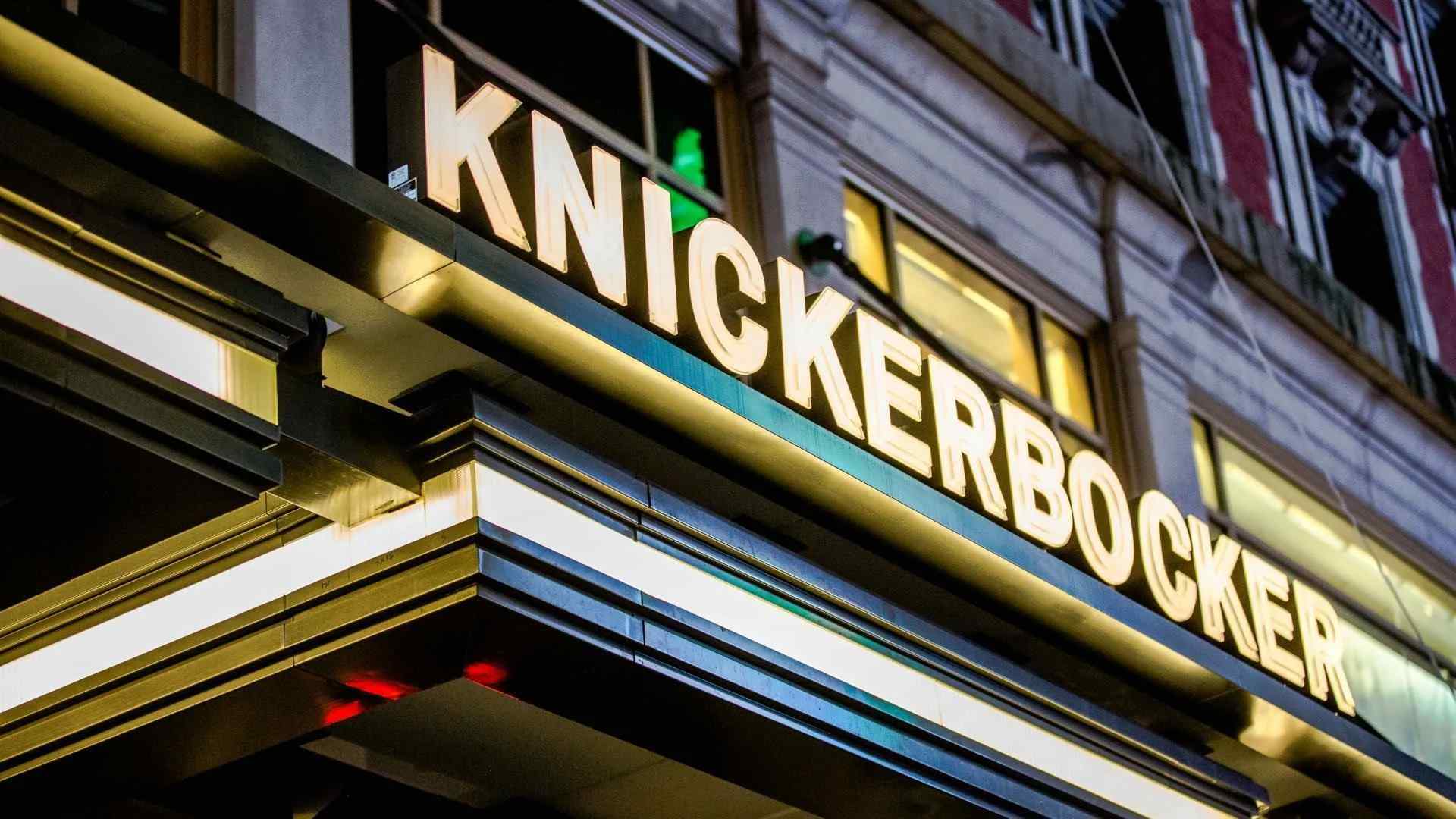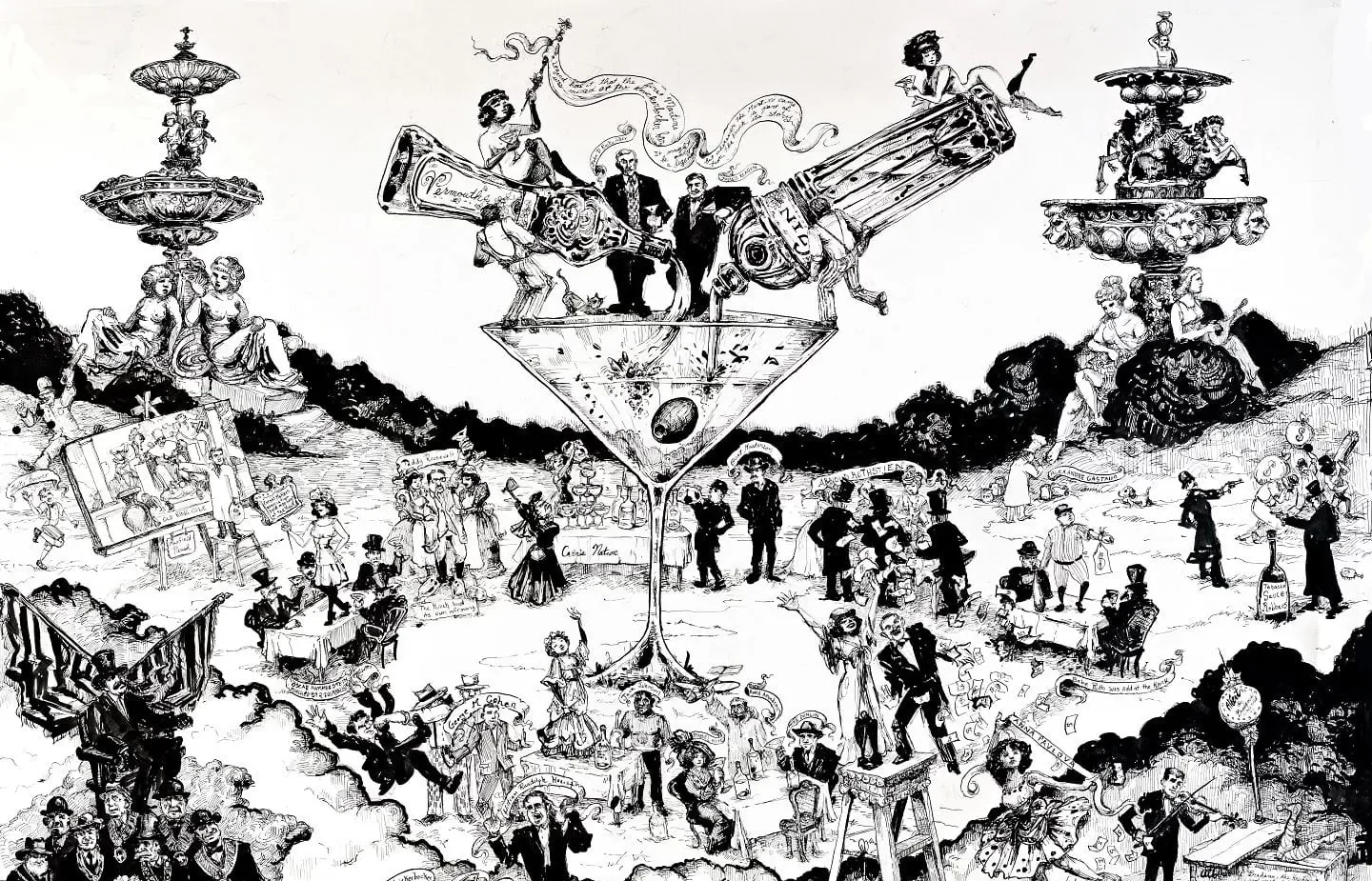Iconic destination. Treasured monument. “The” place to be for glitterati and dignitaries in the early part of the 20th century. From the rumored first-ever martini to our renowned New Year’s Eve rooftop celebrations, The Knickerbocker is a legendary New York landmark. Born in 1906 of a visionary who jumped at opportunities that shaped New York City, The Knickerbocker played a significant role in defining its history as one of three entities—along with the subway system and the New York Times—whose arrival at the crossroads of 42nd Street and Broadway transformed sleepy Times Square into New York City’s biggest tourist destination.
What’s in a Name?
Our rich history has much deeper roots than our official beginnings in 1906. Originally a surname shared by some Dutch-descended New Yorkers, the name Knickerbocker evolved to become the nickname for all New Yorkers and the moniker for a literary magazine, a beer brand, a bridge (later renamed Brooklyn Bridge), one of the first organized baseball teams (founded in 1845), and eventually, the name of New York’s own NBA team, the New York Knicks.
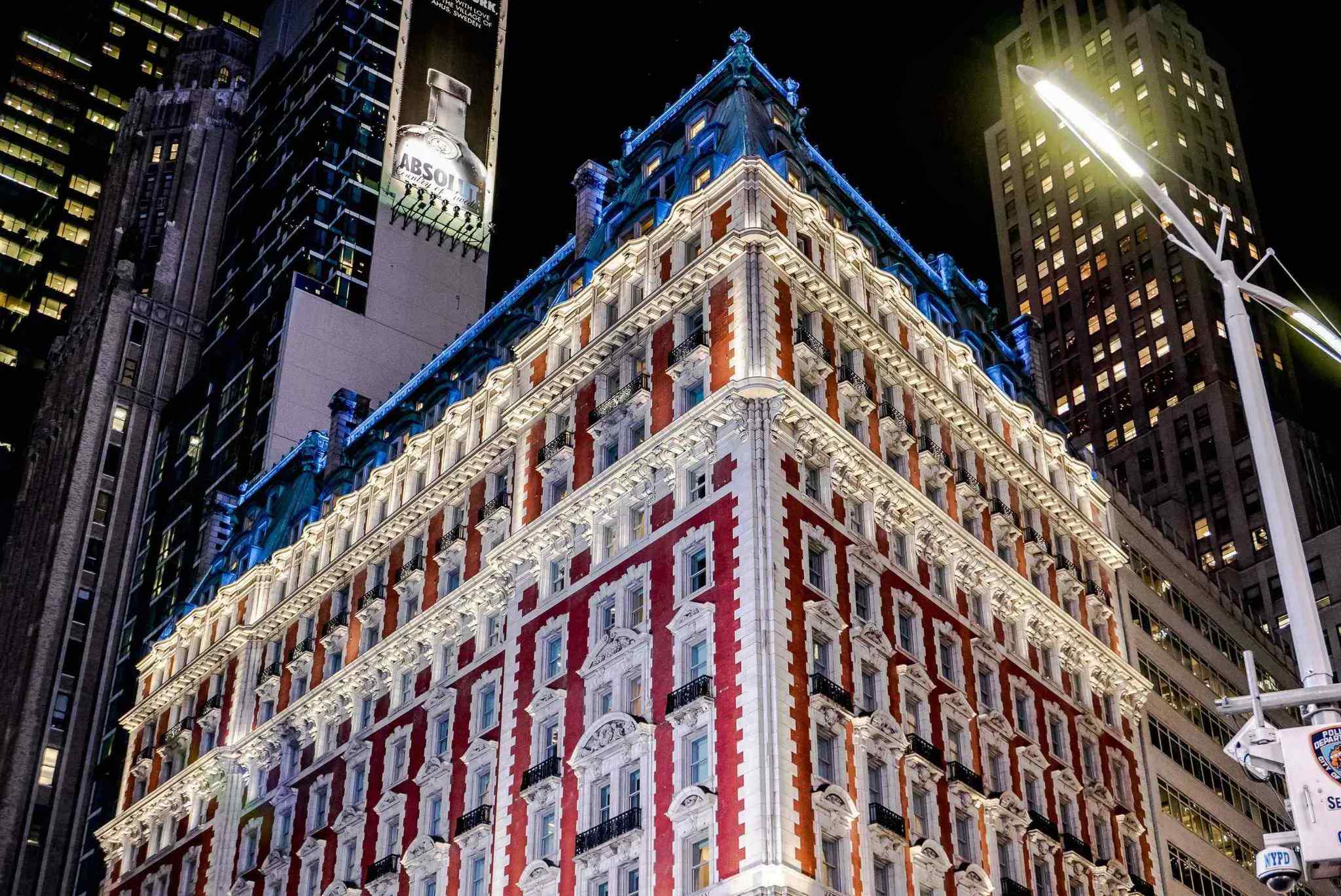
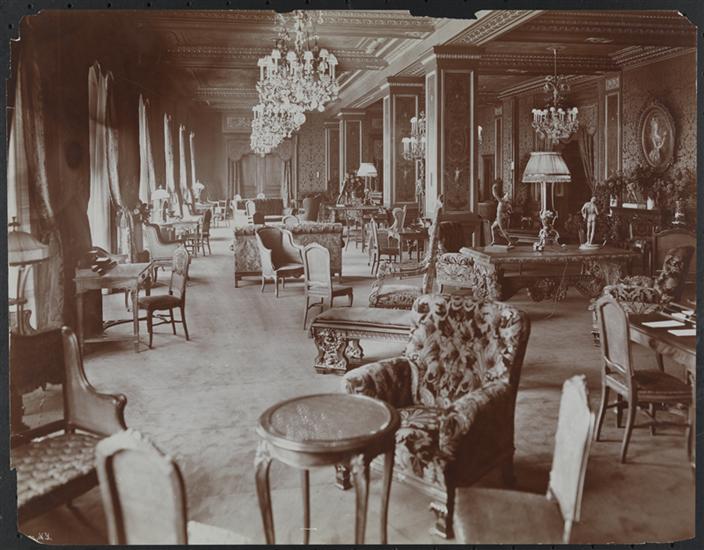
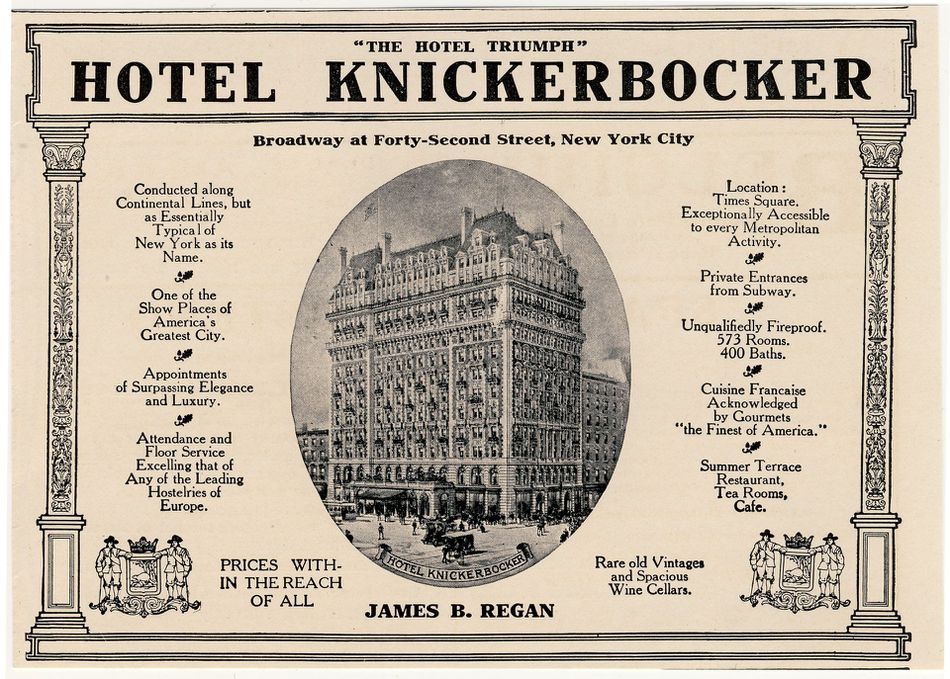
Let’s Rewind.
Saints & Sinners
The original Knickerbocker was just as well known for the artists who frequently visited as it was for the impressive collection gracing its walls. To honor our artistic past, The Knickerbocker commissioned acclaimed New York artist Molly Crabapple to create The Saints & Sinners of The Knickerbocker, a tribute to the illustrious history of the hotel. It tells the stories of the legendary events, inventions, and characters from 1906–1921, from the rumored invention of the martini to F. Scott Fitzgerald writing “Mr. Icky” in his room upstairs.
